Halloween’s coming up, so I’ve been pulling down the scary reads from my TBR shelves. I’ve been alternating novels and picture books since the month started (and Pillars of the Earth in between!), and I’m having a lot of fun scaring myself with these Superhero costumes.
Here’s a (mostly) picture book roundup, with the following books: Faust, The Dark Goodbye, The Diary of Victor Frankenstein, Les Fantomes a la Cave, The Book that Eats People, The Wolves in the Walls, Kate Culhane: A Ghost Story, Eccentric Epitaphs, and The Canterville Ghost, books #139-147 for 2010.
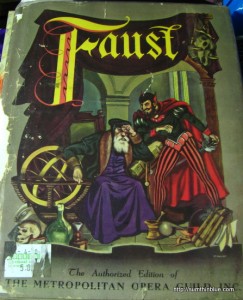 Faust, adapted from Gounod’s Opera by Robert Lawrence, illustrated by Paul Kinnear (authorized edition of the Metropolitan Opera Guild), 1943 hardcover with dustjacket, bought from Book Sale for P5.
Faust, adapted from Gounod’s Opera by Robert Lawrence, illustrated by Paul Kinnear (authorized edition of the Metropolitan Opera Guild), 1943 hardcover with dustjacket, bought from Book Sale for P5.
The 411: Charles Gounod’s Faust, is a popular 19th century opera, played as early as 1859 in Paris. When the Metropolitan Opera opened in which debuted at the Metropolitan Opera in 1893, Faust was the opening production, and has been frequently performed there until 2008. Gounod’s Faust is one of the many works based on the play by Goethe, the classic sell-your-soul-to-the-devil story. Dr. Faust makes the deal with the devil Mephistopheles in exchange for the elixir of youth. With the help of Mephistopheles, Faust successfully woos the beautiful Marguerite, but soon after abandons her, causing her much grief. Marguerite’s brother Valentin challenges Faust to a duel, but Valentin is defeated with Mephistopheles’ magic protection. In the final act, Marguerite bears Faust’s child but kills the infant in her insanity. She is sentenced to execution and Faust attempts to free her, but she leaves her fate to God and she is saved by angels. Faust is dragged off to hell by Satan.
My take: I found the story a bit stilted as the book is patterned after the well-loved opera, with the acts marking the chapters, interspersed with music from the opera. The writing is spare, but dramatic, and the old-fashioned illustrations capture the tragedy hauntingly. This edition will probably appeal most to lovers of the opera, especially the key themes and arias.
My rating: 3/5 stars
 The Dark Goodbye, written by Frank Marraffino, art by Drew Rausch, paperback, bought at National Book Store for P30.
The Dark Goodbye, written by Frank Marraffino, art by Drew Rausch, paperback, bought at National Book Store for P30.
The 411: This horror manga features a detective named Max “Mutt” Mason, who is hired by femme fatale Livinia Tillinghast to find her sister Mary, whom she suspects is in trouble caused by Mary’s physician Dr. Akeley and fiance Karl Marrs. Mutt finds himself embroiled in much more than he bargains for, however, when he finds himself at the heart of dark family secrets involving splattered innards and giant creepy crawlies.
My take: I don’t read a lot of manga but I was attracted to this book because of the sketchy art, and because it was described as “a fusion of Chandleresque hardboiled noir and the weird horror of HP Lovecraft.” When I read it, however, I was sorely disappointed because the story failed to engage, partly because I didn’t like the direction the story went, and the transition into the apocalyptic horror was quite abrupt and the fusion just doesn’t gel cohesively. It just got weirder and weirder, with a lot of violence and even some lewdness thrown in.
My rating: 1/5 stars
 The Diary of Victor Frankenstein, hardcover with dustjacket, via BookMooch.
The Diary of Victor Frankenstein, hardcover with dustjacket, via BookMooch.
The 411: This book resembles the private journal of Victor Frankenstein, the creator of the the undead monster from the classic Mary Shelley novel. It chronicles the events leading up to the creation of the monster cobbled from decomposing human flesh, supplemented by detailed sketches, letters, receipts and other documents.
My take: I was excited to read this book, as I love novelty books like this. It’s a truly beautiful book, with yellowed pages, elegant handwriting, pencil sketches, and lots of ephemera, presenting the epistolary form of the Frankenstein novel in a more visual format. My problem, though is that the handwriting was cramped and difficult to read — it bogged me down in the 24-Hour Readathon because I read from start to finish, only to find out there was a word-for-word transcript at the end of the book! I think the book would have benefitted from less words, better handwriting, more visual elements, and interactivity. But then again, it’s a 1997 book, and interactive novelty books (like this one) weren’t popular yet. Props to the concluding section of this book, though — the monster takes up the last few pages of the journal!
My rating: 3/5 stars
 Les Fantomes a la Cave by Jacques Duquennoy, hardcover, bought from Book Sale for P15
Les Fantomes a la Cave by Jacques Duquennoy, hardcover, bought from Book Sale for P15
The 411: This French picture book (trans. The Ghosts in the Cellar) is a comical story about four ghosts named Henri, Lucie, Georges and Edouard, who are playing cards one night when an ominous boom goes off from the cellar. The ghosts gather their courage to go down into the dark cellar to investigate, and they are terrified by a series of false alarms (a mouse, a spider, a mirror, and some bats), until they find a treasure chest, where a surprise awaits them: Tata Gligli, who is celebrating her 500th birthday!
My take: I found this book in the bargain bin and bought it, even though my French is very basic, and quite rusty at that. I was delighted to find that the simpleillustrations told the story quite effectively, and Babelfish took care of the words I didn’t recognize. It’s a hilarious tale about ghosts who scare themselves (so cute!), and it was a good way for me to get in touch with the very little French I know!
My rating: 4/5 stars
 The Book that Eats People by John Perry, illustrations by Mark Fearing, hardcover with dustjacket, bought for P20 from the National Book Store booth at the Manila International Book Fair.
The Book that Eats People by John Perry, illustrations by Mark Fearing, hardcover with dustjacket, bought for P20 from the National Book Store booth at the Manila International Book Fair.
The 411: This book tells the story of a book that eats people, and resembles it too. Apparently, it is always hungry, and the book tells a cautionary tale about readers that have met a bad end because of this book: Sammy Rushkin, who forgot to wash his hands after lunch (the book smelled the peanut butter off his fingers); Mr. Singh, the library security guard; little Victoria Glassford; Joey, Juan, and Isabel who found it in the trash; Chuck Anderson in his prison cell; and finally, the reader of the book!
My take: I’ve been seeing this book in the bargain bins, but I was hedging on buying it until I saw it at the book fair, and I’m glad I finally bought it. This book uncannily reminds me of Emily Gravett’s Wolves because of its similar book-within-a-book structure, but I love it all the same. The story is fun and imaginative; it’s simple enough for small kids (scary but not so scary), but I think older kids would enjoy it as well. I imagine it would be a great book for storytelling, with a big surprise factor at the end! Mark Fearing’s quirky multimedia art adds punch to the book, working in perfect sync with the words to tell the story.
My rating: 4/5 stars
 The Wolves in the Walls by Neil Gaiman, illustrated by Dave McKean, paperback
The Wolves in the Walls by Neil Gaiman, illustrated by Dave McKean, paperback
The 411: This book, winner of the New York Times best illustrated book of 2003, is a story about a girl named Lucy, who hears wolves making noises inside the walls, but no one in her family believes her, until one day, when the wolves do come out of the walls. The family flees to the garden, where they thought about where they should go. Lucy suggests they go back to their house and stay inside the walls, where they surprise the wolves one night when they are partying. The wolves are frightened by the people coming out of the walls, and they flee, and Lucy and her family are able to move back into their house.
My take: I’m no Neil Gaiman fan — I’m actually more partial to Dave McKean: he rocks! — but I count this book as one of my favorites, I’ve had it for a few years now, but it was borrowed and recently returned to me and I wanted to reread it again. I love the story and its graphic interpretation (McKean’s trademark multimedia illustrations). It’s dark and scary and funny at the same time, and rereading it was a pleasure!
My rating: 5/5 stars
 Kate Culhane: A Ghost Story by Michael Hague, hardcover with dustjacket
Kate Culhane: A Ghost Story by Michael Hague, hardcover with dustjacket
The 411: This picture book is based on an Irish folk tale entitled “The Blood-Drawing Ghost” from the mid-nineteenth century. Kate Culhane is a lonely, down-on-her luck young woman who lives by the sea. One day, while she is visiting her mother’s grave in the churchyard, she hears a disembodied voice telling her to open a grave. As if in a trance, Kate digs open a grave, and a dead man climbs out, instructing her to carry him to the village because she has tresspassed on his grave.
Left without a choice, Kate follows his orders and brings him to a rich merchant’s house. He draws blood from the merchant’s three sons and mixes the blood with oatmeal (ugh!) and then eats it, instructing Kate to do the same. Kate cleverly drops her share into a scarf. Then the dead man tells her to bring him back to his grave, Kate does as he says but tricks him into revealing the cure for the dead young men as well as the location of his treasure and manages to escape at daylight. She then administers the cure (the bloody oatmeal in the scarf) on the merchant’s sons, in exchange for marriage to the eldest son (crafty!). Kate is happily married, and she and her husband dig for the dead man’s treasure, and they live happily ever after — without oatmeal!
My take: This is a charming, old-fashioned tale brought to life by Michael Hague’s exquisite illustrations. Kate’s ingenuity falls through for her — what a way to score yourself a husband and some treasure! Not quite for little kids, but a fabulously chilling tale that even I was scared to read!
My rating: 5/5 stars
 Eccentric Epitaphs: Gaffes from Beyond the Grave edited by Michelle Lovric, hardcover with dust jacket, via BookMooch
Eccentric Epitaphs: Gaffes from Beyond the Grave edited by Michelle Lovric, hardcover with dust jacket, via BookMooch
The 411: This is another humorous anthology from Michelle Lovric, this time compiling the text inscribed on tombstones commemorating the lives of the dead. There is a diverse selection, from cautionary inscriptions for random passersby; epitaphs pertaining to mortal remain; words of regret; references to deadly sins; husband-and-wife combinations; terrible deaths and untimely ends; dedications to people who are “not much missed,” short epitaphs; references to occupation; statements for those glad to be dead; and tidings for the life beyond. Epitaphs of some famous people are also included, like W.C. Fields (“I would rather be living in Philadelphia”), Alexander the Great (in Latin, translating to “Here a mound suffices for one for whom the world was not large enough”), Groucho Marx (“Here lies Groucho Marx and Lies and Lies and Lies. P.S. He never kissed an ugly girl.”); and Benjamin Franklin (written by him, but sadly not used on his grave — “Like the cover of an old book, its contents torn out, and stript of its lettering and gilding, lies here, food for worms. But the work itself shall not be lost, for it will, as he believed, appear once more, revised and corrected by the Author.”) Like other Michelle Lovric anthologies, the pages are decorated with vintage etchings.
My take: This is another great addition to my Michelle Lovric collection (thanks Andy B — I’m a long way from hunting down all of her books)! I love Michelle Lovric’s selection of thoughtful and well-researched gift books, which are both informative and entertaining. This one in particular is delightfully darker than the rest, and while it is no less humorous, it also calls attention to the lost art of epitaph inscriptions. It’s quite inspiring, too — I think I’ll write my own epitaph one of these days!
My rating: 5/5 stars
 The Canterville Ghost by Oscar Wilde, illustrated by Lisbeth Zwerger, paperback.
The Canterville Ghost by Oscar Wilde, illustrated by Lisbeth Zwerger, paperback.
The 411: This book features one of Oscar Wilde’s most famous short stories. The American minister Hiram Otis purchases Canterville Chase in England, despite warnings regarding the Canterville ghost. He moves in with his family and the ghost pulls off his usual shenanigans, but meets his match in the practical family, which acknowledges his existence but puts a damper on his ghostly tricks. Hiram Otis and his wife Lucretia talk to him and offer practical advise (on oiling his chains and dealing with indigestion), the son Washington repeatedly cleans up the puddle of blood he leaves on the carpet, the younger twins torment him with practical jokes. But it is the Otis’ young daughter Victoria who takes the ghost seriously; he reveals his story to Victoria, and she helps him move on.
My take: For a ghost story, this is a wildly humorous tale because the ghost is such a character. He’s got a lot of tricks up his sleeve from centuries of haunting (and he recounts each of them in gory detail!), and he even dresses up for haunting — my favorite is the large slouched hat with a red feather! The episodes are hilarious, especially his encounters with the twins, who try to scare him out of his wits in a series of elaborate tactics! The story sobers up a bit in the end, delivering its message of love’s triumph over life and death, and granting forgiveness for those who have passed away to help them move on from this world. Lizbeth Zwerger’s trademark soft watercolors add a nice touch to this masterpiece!
My rating: 5/5 stars
Phew. This is the bulk of the bunch, but I’ve still got some Halloween reading to write about up until the big day. How about you, are you reading any books for Halloween? What are your favorite scary books?
[amazonify]::omakase::300:250[/amazonify]


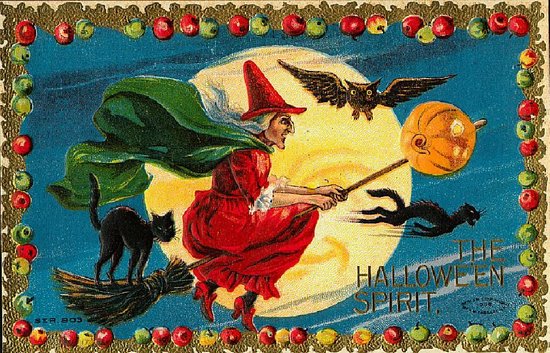
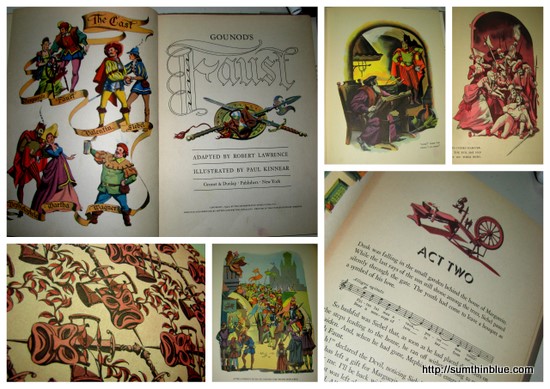
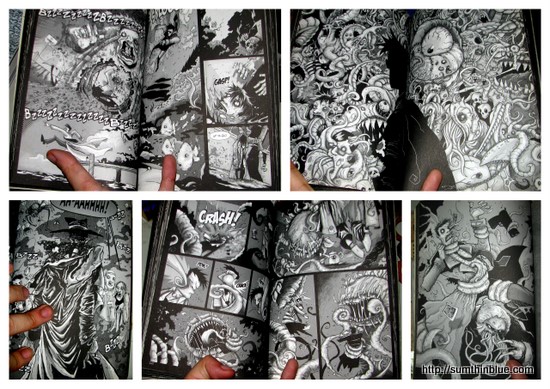
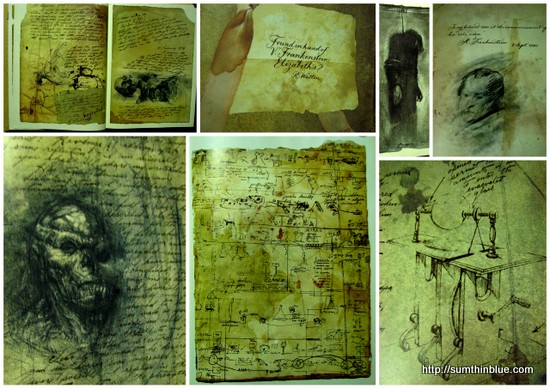

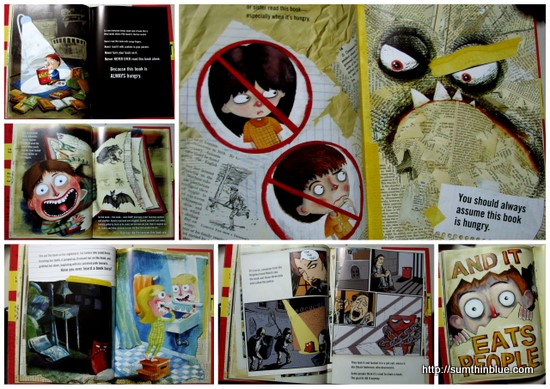
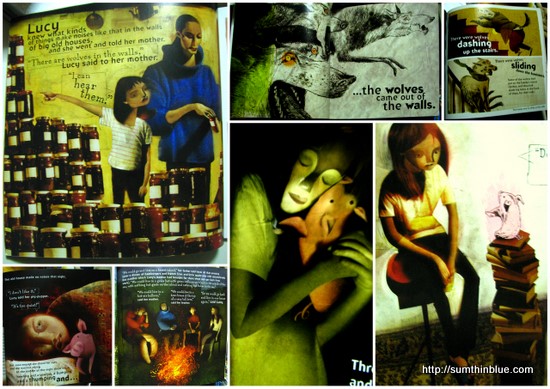
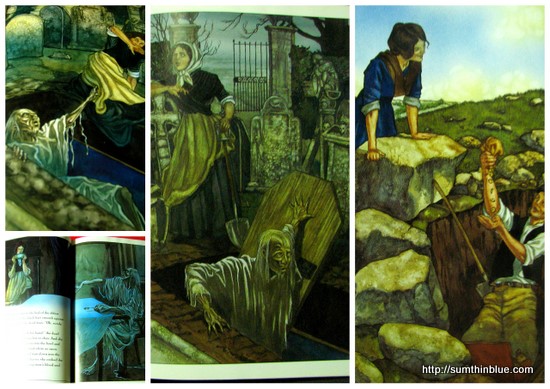
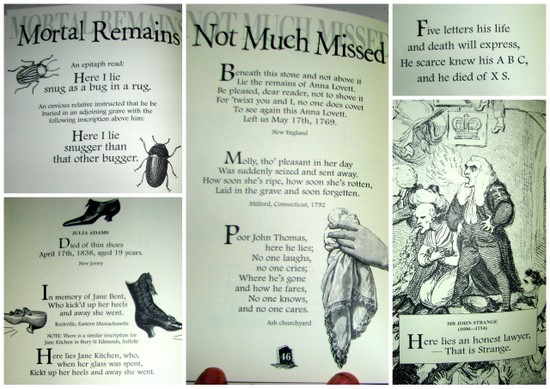
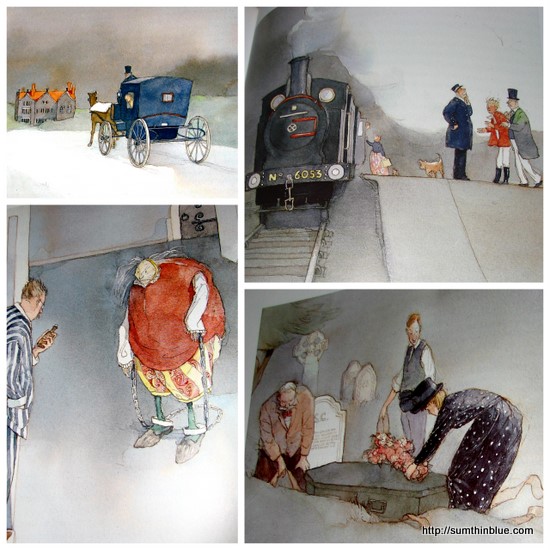
Hi. excellent job. I did not anticipate this. This is a fantastic story. Thanks!